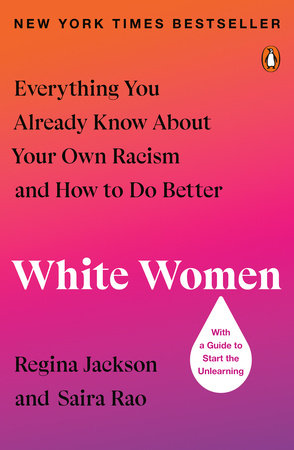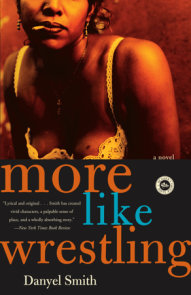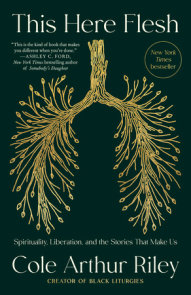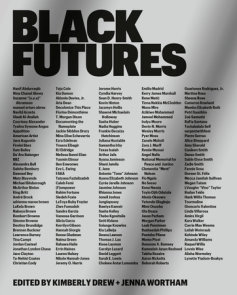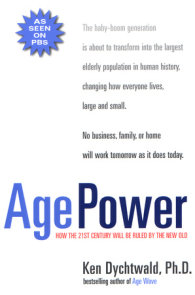READERS GUIDE
A Guide to UnlearningA Conversation with Saira Rao and Regina Jackson
The book is centered on the Race 2 Dinner model, which has both of you moderating conversations between white women about racism and white supremacy. How is the book a tool for white women to confront their own racism, without you or other people of color holding them to account?
Saira: You can take a white woman to the water but you cannot force her to drink. Part of white supremacy culture is wanting everything handed to you on a silver platter—or in the case of anti-racism work, wanting us to hold your hand, tell you what to do, and hand out cookies for a job well done. It just doesn’t work that way. The work is messy. It is not linear. It requires you to dig deep and take your own personal journey. In other words, there are none of those boxes you adore checking.
Our job isn’t to hold white women accountable. White women are grown-ass adults who need to hold themselves accountable, be in community with other white women who are deeply committed to anti-racism work, and will hold each other accountable with love and kindness, rather than with the judgment, competition, and fake niceness that define white women’s relationships with themselves and each other. We say at every dinner: start loving yourselves, start loving each other, start being in sisterhood with each other. Personal and community accountability—that’s what white women need, not us Black, Indigenous, and brown women babysitting their anti-racism work.
Regina: Part of R2D’s work is creating coursework for white women to: 1. Understand white supremacy, what it is, how it functions, and how they uphold and benefit from it, and 2. Work in community with other white women and Black Indigenous Women of Color (BIWOC) to be accountable for doing the work. Third, we have also created coursework for BIWOC to live their best lives by creating a life map for taking control of their own lives and living without fear.
When did you realize that your silence would not protect you? How did it change your priorities?
Saira: I think I have always known that my silence would not protect me, but for most of my life, I leaned into my non-Black privilege and adjacency to whiteness as an Asian American. I would say it became glaringly obvious right after September 11. I was coming up the subway stairs into the World Trade Center that sunny Tuesday morning in 2001 and was one of the many people sprinting up Church Street when the towers fell. I left my apartment that day as a model minority and returned home as a would-be terrorist in the eyes of white America. I knew that day, with certainty, that my silence would not save me. It nevertheless took me years to find my voice.
Regina: It was not until I started my own business that I understood I did not have to tiptoe around white people’s feelings. Many times, the truth is not pretty, but I am committed to being true to myself.
As you mention in the book, perfectionism and the lack of action and confrontation that result from it are a salient and oppressive feature of white supremacy. How have you maintained the energy and the motivation to continually confront instances of racism, both overt and subtle, in the face of a culture that would rather ignore it?
Saira: We are asked this question a lot: What keeps you going, how do you keep up the stamina? My answer is always the same: What choice do we have? White supremacy is killing us. All of us. When you see this clearly, and truly internalize what that means, you cannot not fight. My life, my children’s lives, your life, and your children’s lives all depend on each and every one of us interrogating white supremacy at every turn. The better question, I think, is what’s keeping you from fighting tooth and nail for the only thing that matters in this world: our humanity.
Why aren’t you mad as hell that police are murdering Black people and little kids are getting massacred at school and our tax dollars are going to fund white terrorists whipping Haitian people and destroying Afghanistan and THE EARTH? How are you able to sleep at night? Why do you have more energy and motivation to confront your Black co-worker or Latino gardener or Asian manicurist for being late than you do to confront your own racist bullshit? WHY AREN’T YOU FIGHTING FOR YOUR LIFE AND YOUR CHILDREN’S LIVES?
Regina: I think what white people don’t understand is that doing the work is not optional for us. You either do the work or you end up as someone’s whipping boy. I have no interest in that position.
This book really is a “pulls no punches” kind of book. You even mentioned in your opening that some would put it down immediately. Why was it important for you to write this book in the most honest and direct way?
Saira: Even though white women try to tone police and gaslight us at every turn—if you said it nicer; honey attracts more flies than vinegar—we know it’s not the way we are saying it, it is WHAT we are saying. Namely, that you all are racist. All white people are racist, just like all Asian Americans are anti-Black. We have all been put into the sausage factory, and when you go through the sausage factory you do, in fact, become a sausage. In America, the kind of sausage is based on your skin color. So white people, who are at the top of the food chain, are racist. Period. We can say it with a smile. We can say it while delivering them a pretty cake. We can say it while massaging their feet. And they would STILL hate it. So we might as well say it as clearly and simply and forcefully as we can, because they’ll hate it regardless of how we say it.
As for the honesty part, white people’s feigned ignorance of their racism is what keeps all this violence afloat. If you don’t acknowledge the truth, you can continue to cause your racist harm with a clear conscience. By telling the truth—and beckoning white people to tell their own truth—this foundational feigned ignorance goes poof, and we can attempt to get somewhere.
Regina: For more than four hundred years Black people have been the recipients of violence, hate, rage, jealousy, and denial of our humanity under the legacy of white supremacy.
White people are the perpetrators of all of the above. I am tired of trying to convince them with morality, marches, demonstrations, and legislation, which frankly doesn’t work unless we as a nation uphold our laws. It’s time for every white person to look into the mirror, recognize the ways that they uphold centuries of hate, and make a commitment to themselves to just STOP causing other people pain and suffering because of the color of their skin.
Your work at Race2Dinner is centered on eight to ten white women at a time, yet the audience for this book is every white woman. Aside from the obvious “dinner party discussion,” how does this book differ from the everyday work you do? How is it the same?
Saira: This book is very much an extension of our work. The obvious difference is that white women can (and will) easily walk away from the book. But aside from that, all of the feelings white women have while reading it—all of that internal dialogue—THAT is the stuff that comes out at our dinners: The deflection, the gaslighting, the exceptionalizing, and the virtue signaling that happens in EACH AND EVERY white woman’s head? Every dinner. Every. Single. Dinner. White women are nothing if not consistent.
Regina: It differs in that a dinner can only impact a small number of people at a time, while this book can impact many thousands of people. The experiences will be the same: take no prisoners, look inside, tell the truth, and commit to change. Change only happens when staying the same is too uncomfortable to bear and is, therefore, no longer an option.
What is your favorite chapter or part of this book and why?
Saira: My favorite is Chapter 7: “Microaggressions” and How You Kill Us At Work. Your violence depends on gaslighting us, making us feel like it is us, as individuals, who are the problem: angry, divisive, not team players. By singling us out as the individual problems, you are able to deny the one gigantic systemic problem, namely WHITENESS and ALL WHITE INSTITUTIONS. In Chapter 7, we interview Black women, Indigenous women, Asian women, Latina women. They are in different parts of the country, in different professions, and the story is always the same: White women are horrible to work with. It turns your narrative on its head. We as individuals are not the problem—your whiteness is.
Regina: The chapter on white women and work. Because I can guarantee you that every woman of color has had to suffer through these unacceptable behaviors just to do the jobs that they were hired to do. It ranges from something as simple as someone thinking that you are too animated, to something as painful as someone else thinking that you dress too well for work. It’s all nonsense and it is debilitating. Just STOP!
Throughout this book, you refer white women back to their own experiences with misogyny and sexism. Why?
Saira: By bringing it back to sexism, an oppression that white women experience, we clarify how their unwillingness to see their own racism is analogous to men’s unwillingness to see their own sexism.
This unwillingness is caused by white feminism, which is the tendency of mainstream feminist theory, discourse, and practice to center gender oppression to the exclusion of racial oppression. You’ll recall us talking about how white women will often say things like, “Well you don’t get how it is to be a woman on the receiving end of sexism,” as if we are not women too. We deal with sexism from white men and the men in our own communities, PLUS their white woman bullshit.
Let’s be clear, white feminism is deadly. And it is pretty sad that we have to resort to making these constant comparisons to sexism for white women to see their violent ways. But we do. And it works.
Regina: White womens’ experiences with misogyny and sexism give them a lens through which they can understand their own racist behavior. Their racism takes a similar form to the sexism leveled at them: put-downs, aggression, hostility, and righteousness. The only difference is that they are emboldened to act in these ways because of their race, as opposed to the element of gender that emboldens men to act the same way towards them.
In the preface you state: “We decided to write this book after more than a dozen dinners. Different white women, different dining rooms, different neighborhoods, different cities. SAME CONVERSATION. You are nothing if not consistently WHITE.” What ways are white women NOT consistently white? Is that even possible?
Saira: Whiteness is whiteness. White womanhood is white womanhood. If the question is: Are there exceptional white women? I’d ask back: Why do we always have to exceptionalize white people? If the question is: Are there white women who are really and truly doing the work? The answer to that is: Yes. And it is white women who have no interest in being exceptionalized, praised, recognized as “not being consistently white,” who are the ones doing the actual work. The ones who aren’t asking us to teach them. They are seeking out resources on their own, they are finding community with each other, they are holding themselves and each other accountable, they are following many Black, Indigenous, and other women of color to get lots of perspectives. They are supporting radical, progressive candidates of color at every level. They are supporting Black-, Indigenous-, and brown-led businesses and nonprofits. And they are doing it without wanting us to throw them a parade.
They are doing it because they truly and deeply know that white supremacy is killing them too. And the only way to stop this violent death is through their personal daily actions.
So yes, plenty of white women are doing the work. They just aren’t your favorite white woman Instagram influencer or white woman celebrity or white woman Silicon Valley girl boss.
Regina: It is possible, but it’s only manifested by those who are committed to doing the inner work. This is not work where you attend a company-sponsored DEI session and you are good to go. This is work that requires you to be intentional about what you value in your life, to look in the mirror every day and decide to be an accomplice to antiracism, to listen to and accept guidance from Black and brown women, and to stop focusing on your feelings and centering yourself.
Questions for Discussion and Self-Accountability
Preface
What is the last thing you did or thought that was racist, that upheld systems and structures of white supremacy?
When you think about your life—from home, to work, to social—how do you see systems of white supremacy showing up?
Chapter One
Saira shared her story of white womanhood in this chapter. Knowing that you are not Saira, who are you in this story?
Perfectionism is a mirage. As you read this chapter, what were the ways that your own perfectionism arose in your innermost thoughts?
Chapter Two
Regina shared her story about how she had to “be mean” to be kind. In what ways did that story make you uncomfortable? Recognizing that you are not Regina, who are you in this story?
White women are socialized to be the peacekeepers and to diffuse tension. When you think about your role at home, at work, and with your friends, how do you see this show up? What do you recognize ‘behind the scenes’?
Chapter Three
White silence is violence. This statement has been repeated often—on march signs and T-shirts—but has rarely been personally digested. Identify a time when you were silent that you now regret. What is preventing you from speaking to it now?
White supremacy and patriarchy are two sides of the same coin. How has your silence been carefully crafted in service to both?
Chapter Four
As white women, your lived experience cannot include a racially intersectional lens. As you think about the ways you have shown up in the fight for women’s rights, what are the ways in which you have refused to consider how your own whiteness and racial privilege have impacted the civil rights and other movements by marginalized people?
As you read Saira’s story about a white feminist political action committee, what did you feel? Who were you in this story? What are some ways that you think it could have evolved in a more inclusive fashion?
Chapter Five
Saira and Regina both shared personal stories in this chapter. As a refresher, Saira’s story involved the white mother of one of her children’s friends and Regina’s involved a white woman policing yard signs. Name the reason it is easier for you to see yourself as the protagonist and then correctly identify why you would actually be the antagonist.
Your white entitlement is so normalized, it is often difficult to recognize the white supremacy within your everyday actions. In fact, most white women would deny that they ever engage in this behavior. Make a list of five entitled actions you recognize within yourself on a daily or semi-daily basis.
Chapter Six
Think back to your education: elementary, secondary, post-secondary. How many Black, Indigenous, and non-Black teachers of color did you have? How do you think this impacted both the style and content of your education, and the way you live in the world today?
We know that there are entire industries built around the failure of Black, Indigenous, and non-Black students of color. How have you been complicit with this?
How have you shown up to ensure that schools in your area are engaging in the heavy work of decolonizing and antiracist education? What questions have you asked about the curriculum being accurate with respect to our history: regional, US, and global? What questions have you asked about the library resources? What questions have you asked of school leadership about the hiring of Black, Indigenous, and non-Black people of color?
Chapter Seven
This chapter shared multiple stories of Black, Indigenous, and non-Black women of color in the workplace. Which story’s white woman antagonist is most like you? How? What are three ways that you can change that immediately?
We know that white women will statistically choose themselves and their advancement at work over their sisterhood with others, most especially Black, Indigenous, and non-Black women of color. Name at least one way you have stepped on another woman (and more specifically, a Black, Indigenous, and non-Black women of color) to advance or receive accolades. Within your own work context, name how you will prevent doing so in the future.
Chapter Eight
This chapter includes five definitions, with examples, of deflection techniques employed regularly by white women. Name at least one way you have engaged in each of these techniques to deflect from your own racism and complicity with white supremacy.
The grift of white supremacy goes hand in hand with the grift of white wellness. Take an inventory of the way you engage in platitudes, toxic positivity, and wellness culture. Name the ways in which your quest for enlightenment has actually been a study in white supremacy culture.
Chapter Nine
Name the ways in which you have made yourself the exception—giving yourself the title of ally or accomplice, when in reality you have acted in the capacity of a white savior. What do you see as the difference? How will this realization change you in the future?
How can you be an ally or a savior in the fight against something that also kills you? What are the ways in which white supremacy is hurting and killing us all? Going forward, what are the practical ways you will address white supremacy as a person who is both helped by and harmed by these systems?







